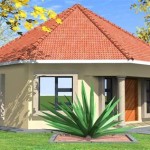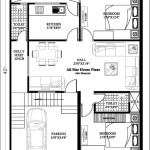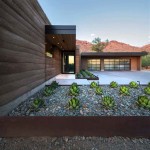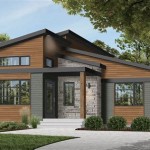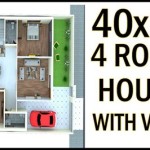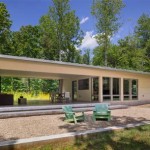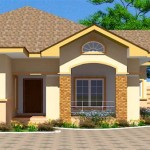Hawaii Plantation House Floor Plans
Hawaii's plantation era, spanning from the mid-1800s to the mid-1900s, left an indelible mark on the islands' architectural landscape. The unique style of plantation houses, born from a blend of necessity, cultural influences, and available materials, continues to captivate and inspire. Understanding the typical floor plans of these homes provides insight into the lives of the diverse communities who inhabited them.
Key Features of Hawaii Plantation House Floor Plans:
- Elevated foundations for ventilation and pest control.
- Large, covered lanais or verandas for outdoor living.
- Simple, rectangular shapes with gable roofs.
- Single-wall construction with wood siding.
- Open, interconnected living spaces.
- Emphasis on natural light and airflow.
- Adaptable layouts to accommodate multi-generational families.
Plantation houses were designed to accommodate workers and their families who arrived in Hawaii from various parts of the world, including Japan, China, Portugal, the Philippines, Korea, and Puerto Rico. These homes, typically modest in size, needed to be functional, durable, and adaptable to the tropical climate. The architectural design often incorporated elements from these diverse cultures, resulting in a unique hybrid style.
Common Elements of Plantation Style Homes:
- Kamaaina style with local woods and high ceilings.
- Integration of Japanese design influences like sliding doors and tatami mats.
- Filipino design elements like capiz shell windows and nipa thatch roofs (in earlier structures).
- Use of readily available materials like corrugated iron roofing.
One of the most distinctive features of Hawaii plantation house floor plans is the raised foundation. This design element served multiple purposes. It allowed for better airflow beneath the house, crucial in the humid climate, and also helped to protect against pests and flooding. The space under the house often provided storage or a sheltered work area.
The Significance of the Lanai:
- Serves as an extension of the living space.
- Provides shade and protection from the elements.
- Facilitates social interaction and community building.
- Offers a place for relaxation and enjoying the tropical breezes.
Another defining characteristic is the prominent lanai or veranda. These covered porches, often wrapping around multiple sides of the house, acted as an extension of the living space, blurring the lines between indoors and outdoors. The lanai provided a shaded area for socializing, dining, and relaxing, taking advantage of the pleasant tropical climate. It also fostered a sense of community, as neighbors often interacted on their lanais.
Typical Room Layout in a Plantation House:
- Central living room acting as the heart of the home.
- Smaller bedrooms flanking the living area.
- A combined kitchen and dining space, often located towards the rear.
- Bathrooms, initially simple and often located outside the main structure, evolved to become integrated into the house.
The interior layout of a plantation house typically featured a central living room that served as the heart of the home. Smaller bedrooms were often situated around this central space, reflecting the communal nature of family life. The kitchen and dining area were frequently combined and situated towards the rear of the house. Bathrooms, initially basic and sometimes located outside the main structure, gradually became integrated into the house as plumbing systems improved.
Evolution of Plantation House Designs:
- Early plantation houses were simpler and smaller, often reflecting the architectural styles of the workers' home countries.
- As families established themselves, homes were expanded or modified to meet their growing needs.
- Later plantation houses incorporated more Western architectural influences.
- The use of durable materials like concrete and metal increased over time.
Over the decades, the design of plantation houses evolved. Early structures were often simpler and smaller, reflecting the building traditions of the workers' home countries. As families established themselves and prospered, their homes were expanded or modified to accommodate growing needs. Later plantation houses began to incorporate more Western architectural influences, and increasingly utilized more permanent materials such as concrete and corrugated metal roofing for greater durability.
The legacy of Hawaii's plantation era continues to resonate in the islands' architecture. The distinct style of plantation houses, with their emphasis on practicality, adaptability, and connection to the outdoors, has become an iconic representation of Hawaii's diverse cultural heritage.
Modern Adaptations of Plantation Style:
- Contemporary architects draw inspiration from plantation-style designs, incorporating elements like raised foundations, large lanais, and open floor plans.
- Modern materials and construction techniques are used to create updated versions of these classic homes.
- The focus remains on creating comfortable, functional spaces that embrace indoor-outdoor living.
Modern architects and homeowners continue to draw inspiration from these historic homes, adapting the plantation style to contemporary needs and preferences. These modern interpretations often incorporate key features like raised foundations, expansive lanais, and open floor plans, while utilizing modern building materials and techniques for updated functionality and comfort. The focus remains on creating spaces that are both beautiful and practical, reflecting the enduring appeal of Hawaii's plantation heritage.

Pin On Home Plans

Sims

Southern Home Plans Plantation Style Wrap Around Porch

Plantation Style Architecture Kaua I Kui Ula

75 Courtyard Floor Plans Ideas In 2024 House


The Visionary Space Hawaiian Plantation Style Homes

Popular Hawaiian Home Styles And Pre Design Options Luva Real Estate

Pin On Plantationy Homes

Lehua Plantation Longhouse Design Build

